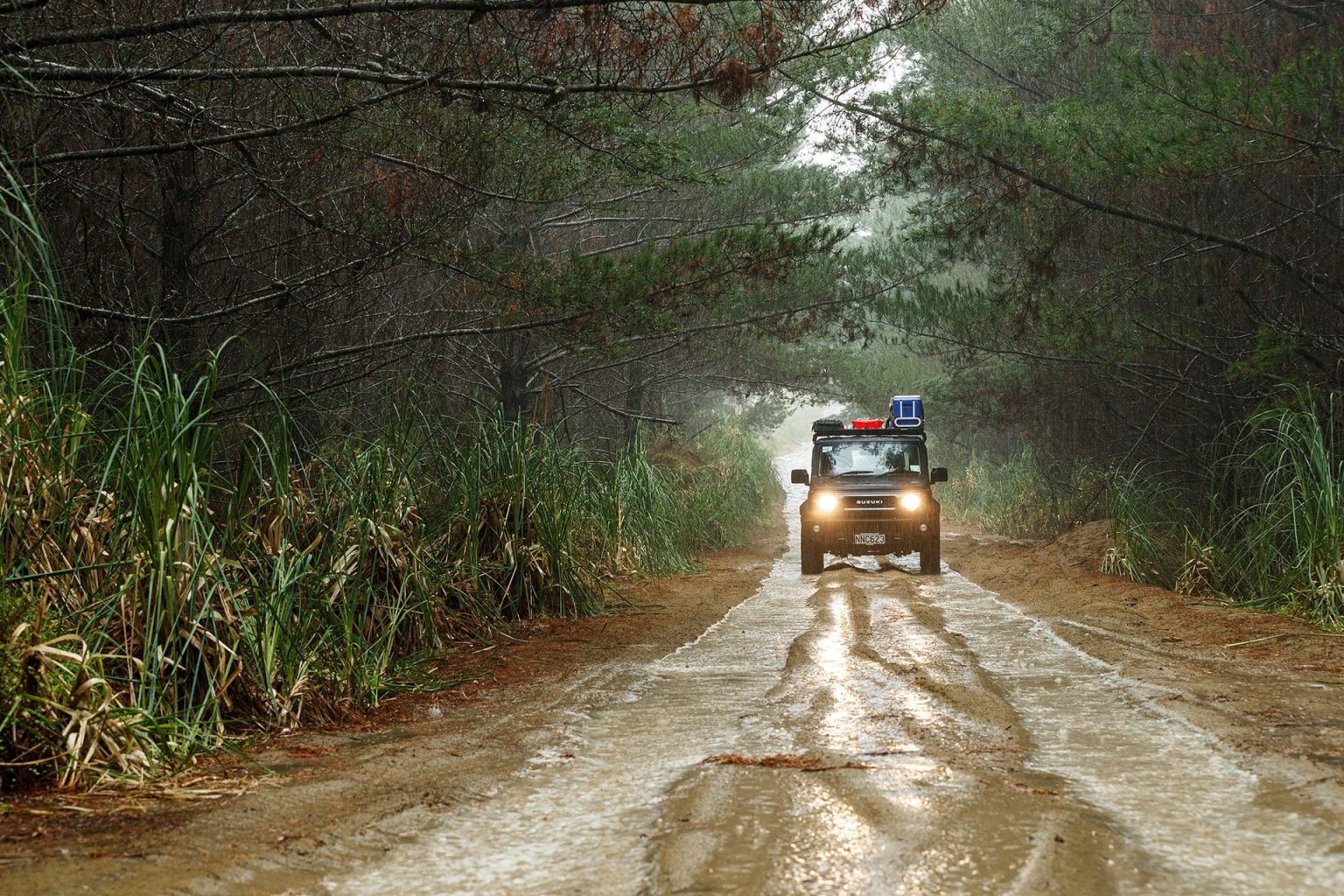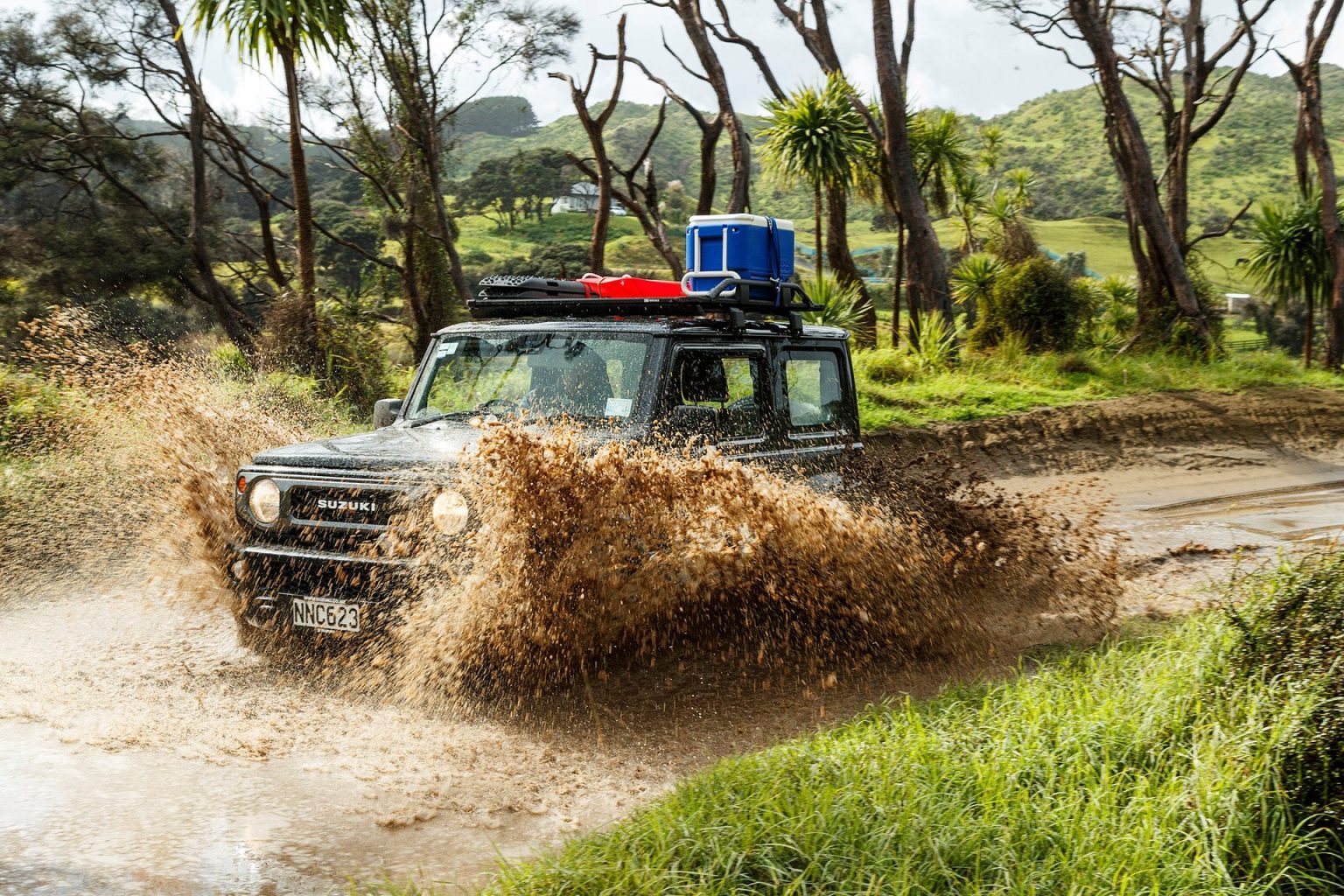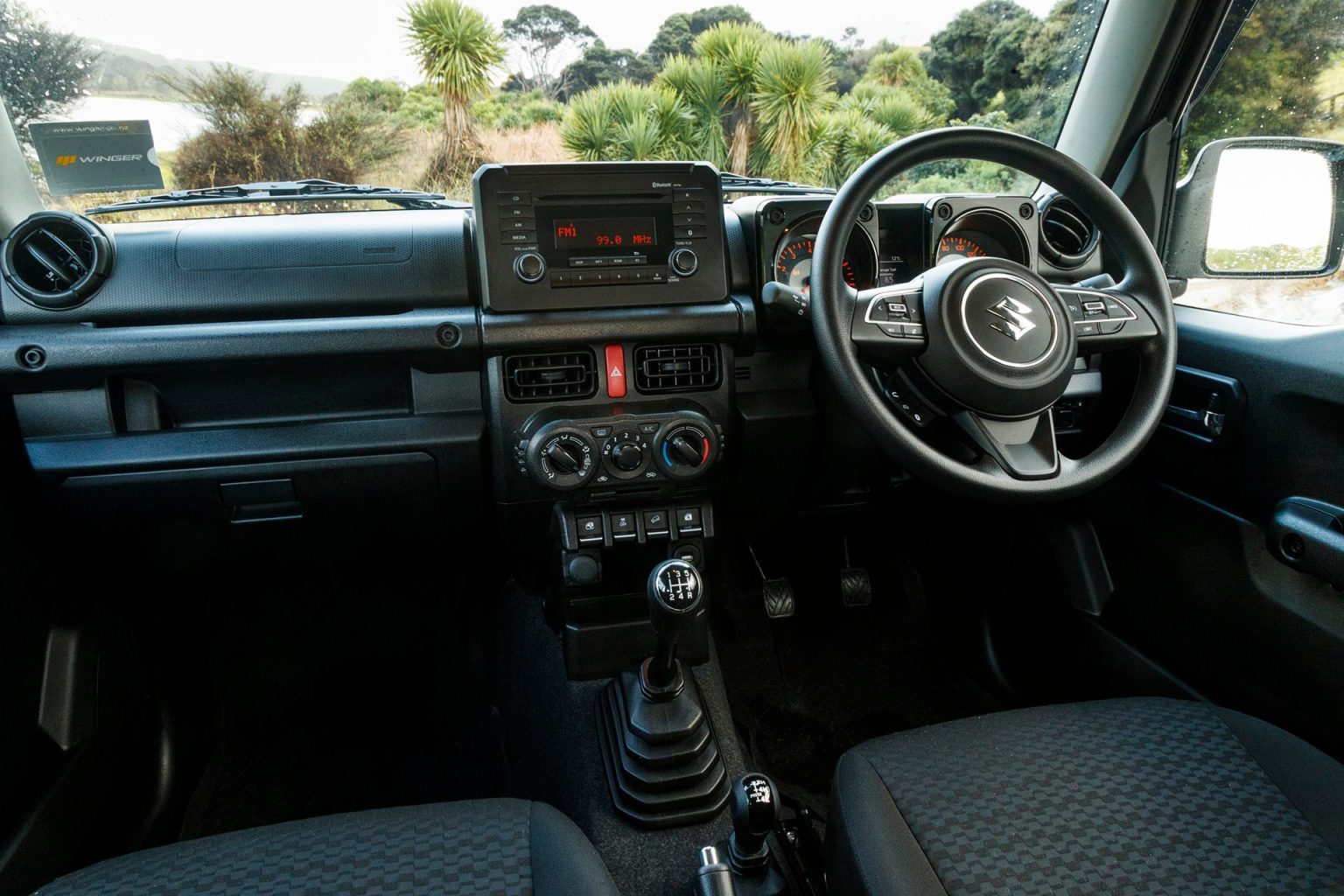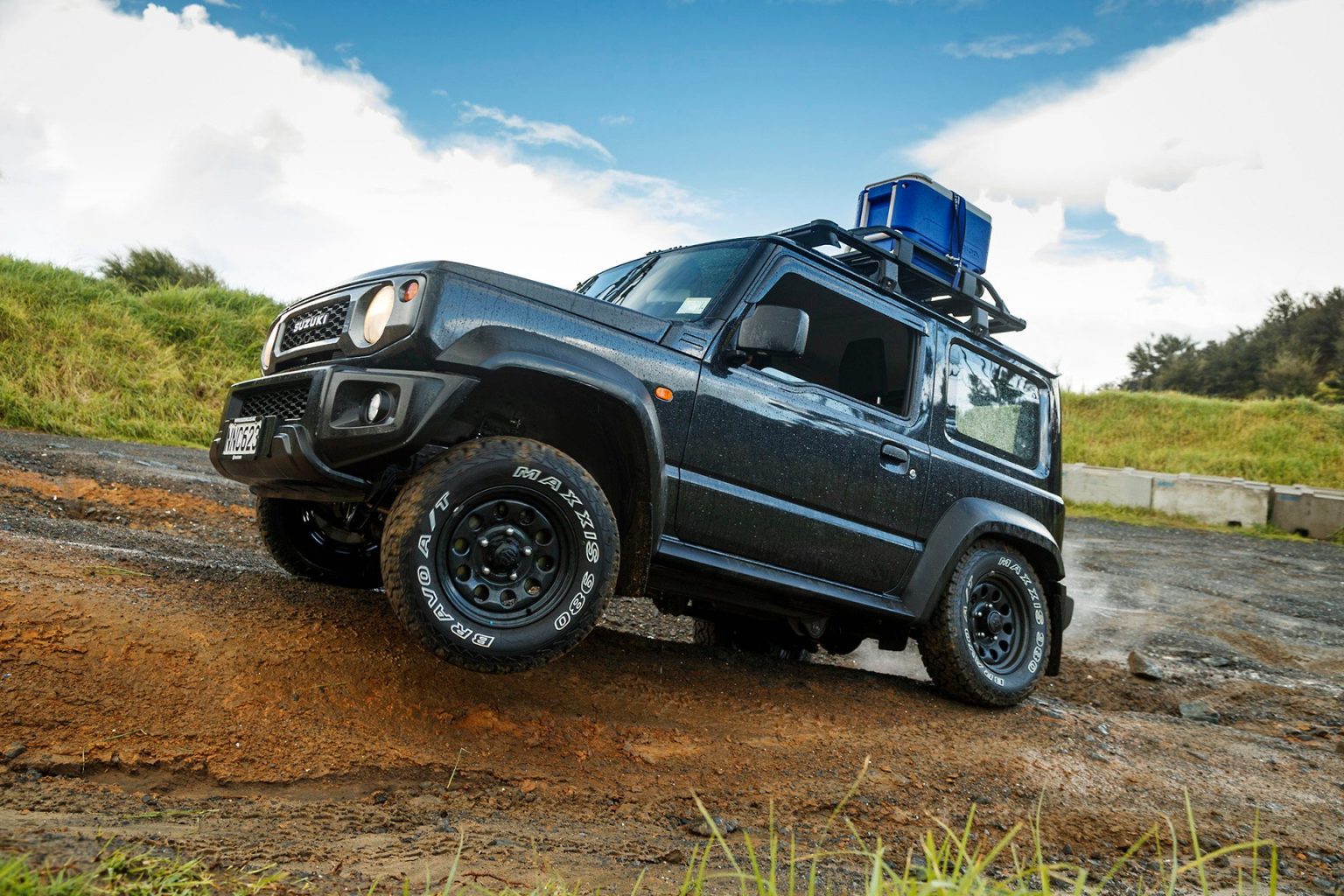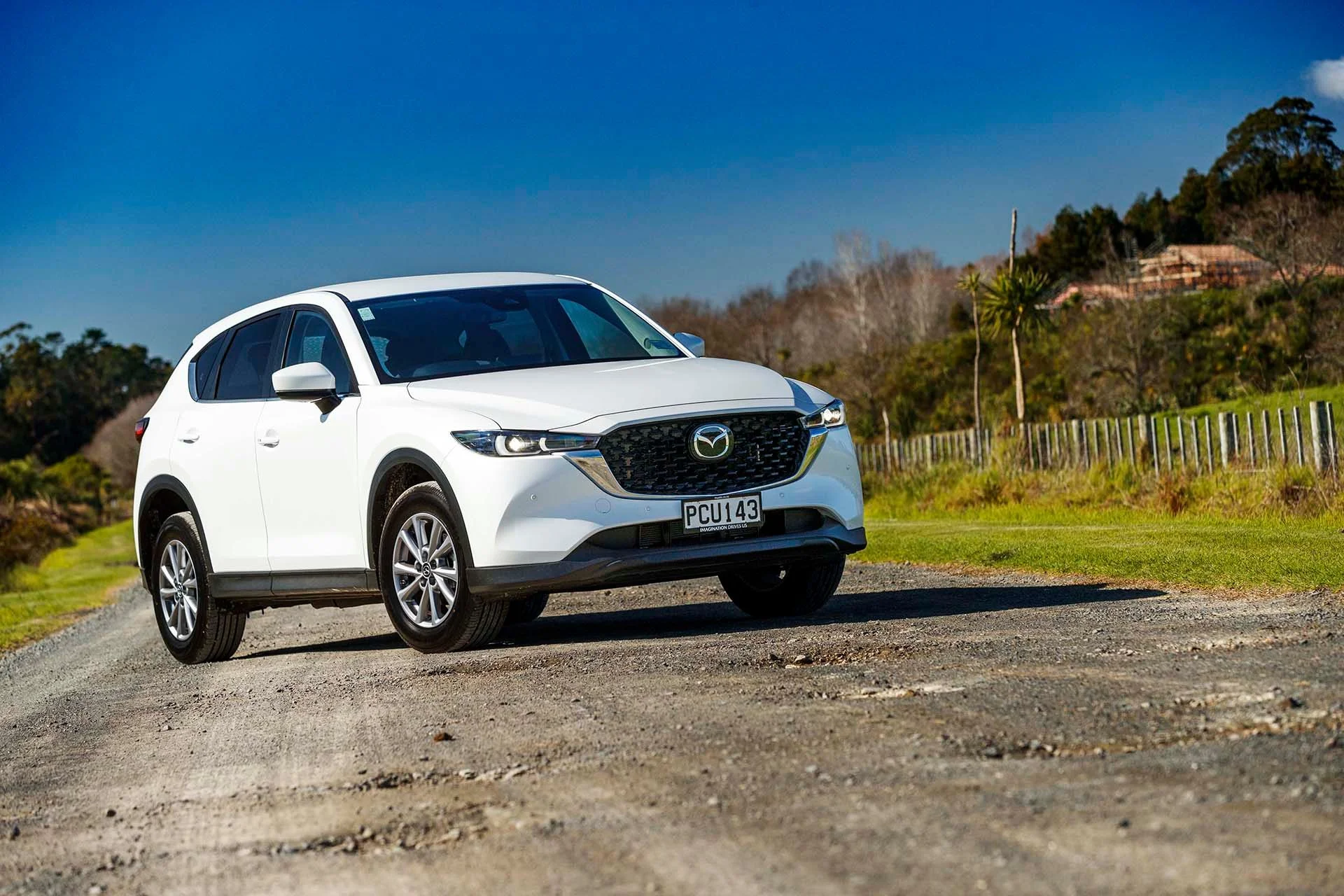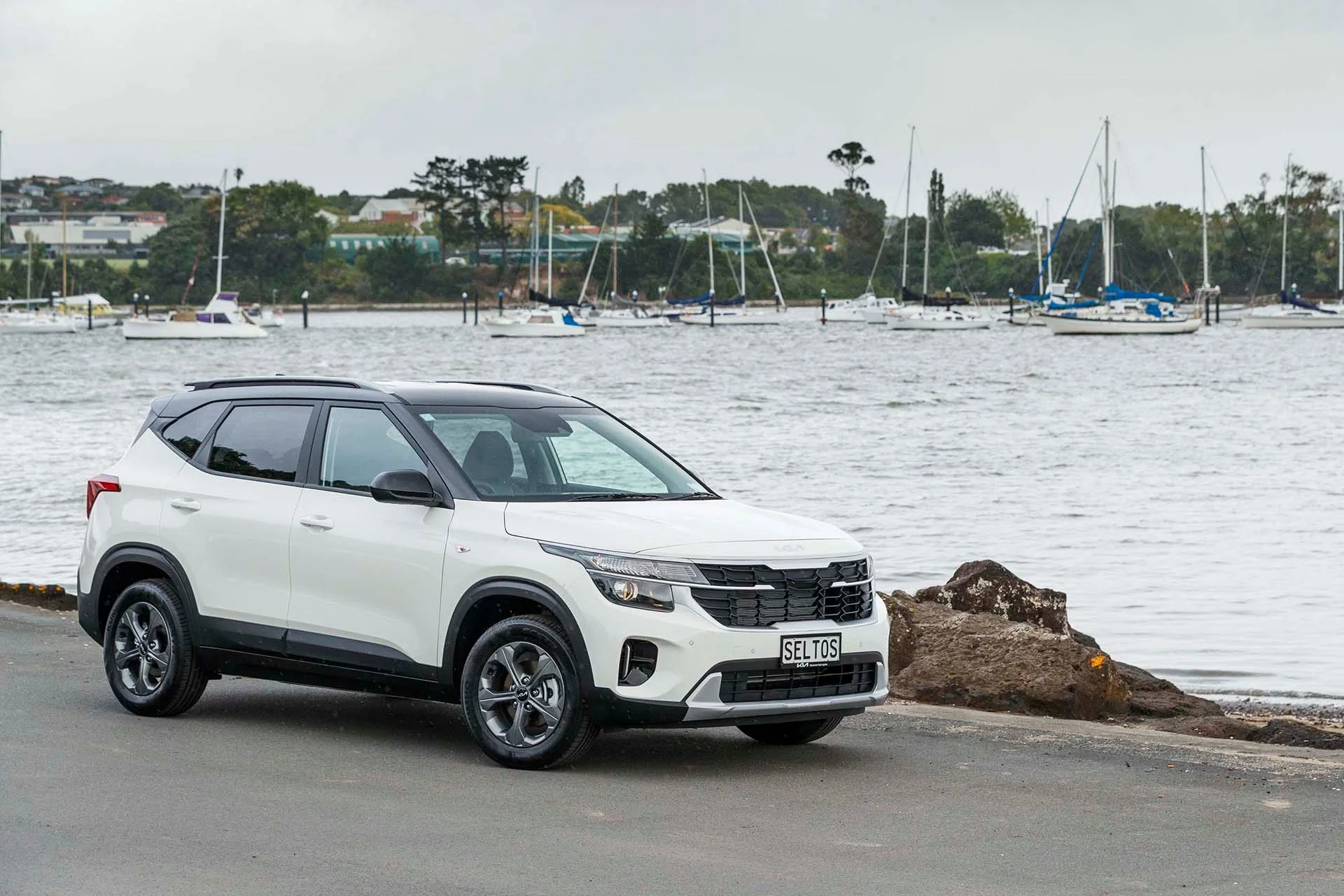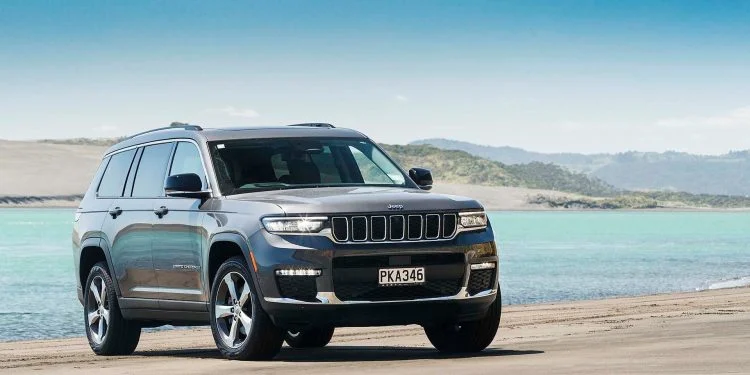2021 Suzuki Jimny JX Safari review
Suzuki adds the extras to its JX Jimny to birth the Safari. We go on a mud tour to check it out.

Squinting through the murky windscreen I struggle to spot him. Tom, our photographer, looks to have completely disappeared. Howling winds roar past the Jimny, catching its slabby little body, trying to tip it over. By now the rain is hitting at almost a 90-degree angle. Trees are blustering overhead, occasionally breaking to reveal a mostly black sky. From nowhere, Tom, now resembling a drowned rat, swings open the passenger door. He’s got the shot, and a dab of hypothermia.
This wasn’t an ordinary SUV photoshoot, but nor was the subject.The new Suzuki Jimny has been with us for two years. In that time it has defied a stern telling off from NCAP and European emissions regulators and is one of the most in-demand nameplates on the planet. Now a new model has been added to the local stable; the Jimny Safari.
In Suzuki folklore the Safari term is most commonly associated with the Jimny’s second-generation SJ30 and SJ40 models, perhaps better known in these parts as Suzuki Samurais. These were often modified with unofficial ‘safari’ kits. Enthusiasts would layer their diminutive 4x4s with snorkels, lift-kits, mud tyres, winches, roll cages, bull bars, and all manner of other devices. This new Jimny Safari then, a locally outfitted model unique to New Zealand, can be seen as a loose extension of the nameplate’s history.
The new trim level lobs in Suzuki’s ‘Heritage grille’ as standard, plus monsoon guards, mud flaps, a cargo tray for the boot, a stack of Safari branding, and an ARB roof rack. The most critical change though is the new set of boots – Maxxis Bravo 980 all-terrain tyres. The Jimny ordinarily wears some of the dinkiest tyres in the game; 195/80 Bridgestone Duelers, to be precise. So while the new Maxxis 215/75s might not look like much on paper, they represent a step up.
The adventure-seeking trim is built on the Jimny’s JX base variant. So compared with the Sierra we’re more familiar with, not only does it miss out on a reversing camera, it also skips the seven-inch infotainment system entirely. It’s swapped for a time-warp unit that thankfully retains Bluetooth. The relic audio system complements the rest of the simplistic cabin in a way, brimming with hard plastics and ‘function over form’ thinking. The dials add enough retro chic to give it some style. Adults have enough head and legroom up front, with the rear only really suitable for kids.
It also skips climate control, swapping out the digital interface of the Sierra’s air conditioning for a cruder set-up. The leather-wrapped steering wheel is traded down for a urethane jobbie. There’s no automatic transmission option, only the manual. Instead of LED projection headlights, you get halogens. Such is the cost containment of the JX that you even lose the passenger-side sun visor vanity mirror. It’s unknown why Suzuki’s local arm chose to use the JX as the Safari’s base, although a cynic might say it’s the brand’s way of getting its less popular ‘stripper’ variant out the door.
Apart from having to learn how to reverse again without a camera, the upshot of all this spec-sheet malarky is a bargain basement price. Even though the Safari is the biggest head-turner in the Jimny fleet, it ends up with exactly the same sticker price as the Sierra manual; $29,990, subsequently valuing the extra kit at $3000.
What hasn’t changed is the Jimny’s agricultural 1.5-litre naturally aspirated petrol four, producing 75kW at a screaming 6000rpm and 130Nm at 4000rpm. It’s a blessing in disguise that the Safari skips the four-speed automatic, as the laboured powertrain is less of a chore when you can dictate gears yourself. On sealed roads the puzzle pieces come together exactly as you’d expect … the Jimny is slow. Very slow, 100km/h takes 13 seconds. But in an era where just about everything comes with forced induction, there’s a unique old-school joy felt when wringing every skerrick of its meagre straight-line performance. Traversing from redline to redline sees the tacho needle wag like a Jack Russell’s tail on rubbish collection day. It’s fun.
The tyres are the most significant tweak to the recipe. By and large the wider footprint makes the daily driver experience a touch more grown up. Even though there’s less sidewall to play with, ride quality is as plush as ever. And tyre roar, the bane of some all-terrain rubber options, is near enough non-existent. Slightly more wandering between the lanes is one of the sole drawbacks. The Jimny’s coil-sprung suspension’s softness is extreme to the point that bodyroll and dive under brakes are daily formalities.
Veering into the mud, it becomes a little harder to spot the nuances. The inherent problem with making an even-more-capable Jimny is that the base vehicle is already incredibly competent when taken off-road. Even on the standard rubber, it would take an incredible incline or mud pit (or a clear bout of operator error) to flummox a Jimny. Suzuki’s proven ladder chassis, combined with its switchable ‘AllGrip Pro’ four-wheel drive and brake-based traction control make this an incredible thing off-road. With a budget three times its sticker price, it’s hard to see anything other than maybe a Jeep Wrangler outperforming a stock standard Jimny on the trails.
I was able to achieve some fairly aggressive articulation with the Safari. Divoted inclines, steep angles with minimal run up, none of it was a challenge. It seemed to soak up our regular off-roading loop better than anything I’ve taken there previously, with an experience that feels very similar to what it was like taking a standard Jimny on the same undulating gravel roads two years ago. Without driving the two back to back, though, it’s hard to discern just how much of an improvement the Safari represents.
To dwell too much on how ‘effective’ the Safari is probably misses the point, though. This is a four-wheeled outlier; truly a traditional off roader. As we hurtle towards a new technological age in cars, it’s curious to look at the wild success not only of the Jimny but also the new Ford Bronco overseas. With added electrification and autonomy, the allure of the back-to-basics Jimny is charming.
Browse Ford Bronco Listings
Car Details
Model: Suzuki Jimny Safari
Price: $29,990
Engine: 1462cc, IL4, EFI
Power: 75kW/130Nm
Drivetrain: 5-speed manual, switchable 4×4
Fuel Use: 6.9L/100km
C02 Output: 158g/km
0-100km/h: 12.9sec
Weight: 1096kg
Browse Suzuki Jimny listings on Trade Me
Image gallery
Also consider
